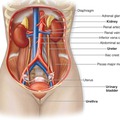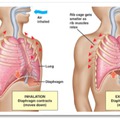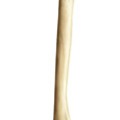My power point presentation about the structure and function of the skin
50 incredible facts about your skin
Quizlet flashcards about the human skin
Learningapps labelling task
Learningapps matching task - Which layer of the skin do these statements refer to?
Experiments with your skin.
Station 1: Locating Sweat Glands
There are more than 2 million pores that produce sweat on your skin. Sweat glands are very difficult to locate with the human eye, but this activity will allow you to identify the location of sweat glands on an area of your own skin.
1. Use a cotton bud to spread iodine in an approximate 5 cm x 5 cm square on your palm. Allow the iodine to dry completely.
2. Muscle contraction will create excess heat that will cause your body to release
sweat in response. To do this you can either clench your hand into a fist and
release repeatedly until your palms release sweat OR rub the ends of your hands
together to create heat until your palms release sweat.
3. Check your palm to determine whether sweat has been released. As soon as
there is evidence of sweat, press the cornstarch sheet firmly to your palm over
the iodine.
4. The pores where sweat has been released will show up as dark spots on your
cornstarch sheet. If no dark spots appear, repeat steps 3 and 4 until sweating
does occur.
5. The colour change occurs because cornstarch and iodine react to create the dark
colour, and only in the areas where sweat has made the iodine liquid will it stick to
the cornstarch sheet.
Were the sweat pores on your palm evenly distributed?
Station 2. Touch test
a ballpoint pen, a ruler, a hair probe
- Draw a (2cm x 2cm) square on your partner's hand with the pen.
- Ask your partner to close his/her eyes.
- Tap the skin inside the square from point to point using the hair probe.
- Ask your partner to tell you when s/he feels the touch. Mark the points where s/he felt the touch.
How many points did you draw? - Repeat the test on the inner forearm!
Is there a difference? Why?
Station 3. Warm or cold?
There are three glasses of water on the tray: No. 1 is warm, No. 2 is tepid and No. 3 is cold.
Put your left hand into No 1, and your right hand into No 3 for 60 seconds.
Then put both hands into No.2 in the middle.
What do you feel with each hand?
Why?
Station 4: Two-point distance
There are mechanoreceptors that respond to touch, pressure, and vibrations distributed throughout the surface of the skin. Some areas of the body are more sensitive than others. Those areas that are more sensitive have more mechanoreceptors located in that area. In this activity you will have the chance to determine the sensitivity of different areas of your skin.
1 Have your partner close his or her eyes or look away.
2 Place the two points of the calliper on the forearm.
Make sure the two points contact the skin at exactly the same time.
3 Ask your partner whether he or she feels one or two points touching the skin.
4 If your partner feels one point, remove the calliper, open it slightly wider, and continue this process until your partner feels two points.
5 When your partner feels two points, measure the distance between the two points in millimetres.
6 Repeat the process on the thumb, on the palm, too.
Which part of the body that you tested was the most / least sensitive?
Station 5. Microscopic investigation
Observe the slide in the microscope and identify the parts.
Station 6. Fingerprints
Everyone has a unique set of fingerprints. All fingerprints are made up of loops, whorls, or arches.
loop: fingerprint patter involving ridges that enter and exit from the same side
whorl: fingerprint pattern involving circular ridges
arch: fingerprint pattern where ridges enter from one side and exit on the other side
- Roll your partner’s finger on the ink pad.
- Then roll the inked finger onto the paper.
- Clean his or her finger.
- Examine the prints using a magnifying glass. Categorize each print as either whorl, arch, or loop.
A bejegyzés trackback címe:
Kommentek:
A hozzászólások a vonatkozó jogszabályok értelmében felhasználói tartalomnak minősülnek, értük a szolgáltatás technikai üzemeltetője semmilyen felelősséget nem vállal, azokat nem ellenőrzi. Kifogás esetén forduljon a blog szerkesztőjéhez. Részletek a Felhasználási feltételekben és az adatvédelmi tájékoztatóban.




